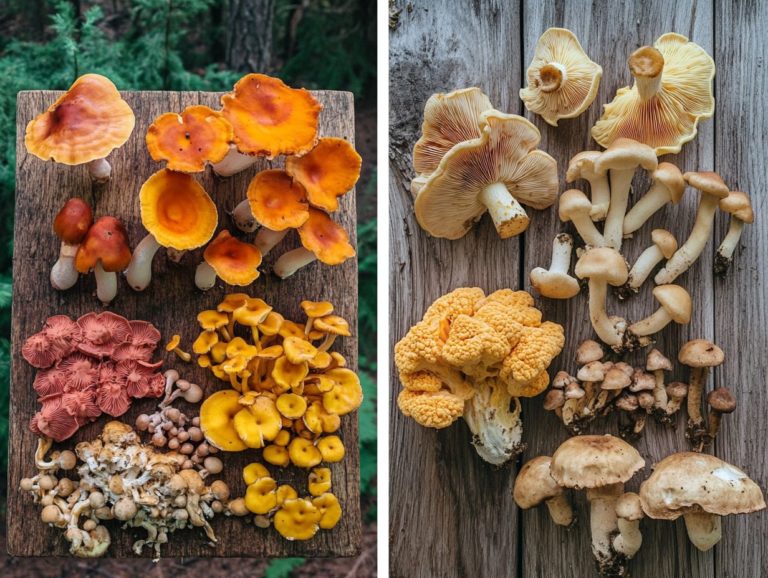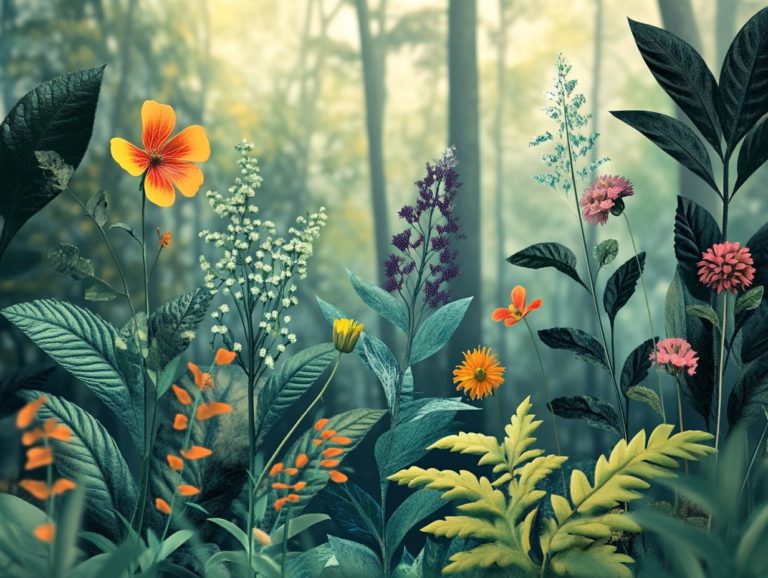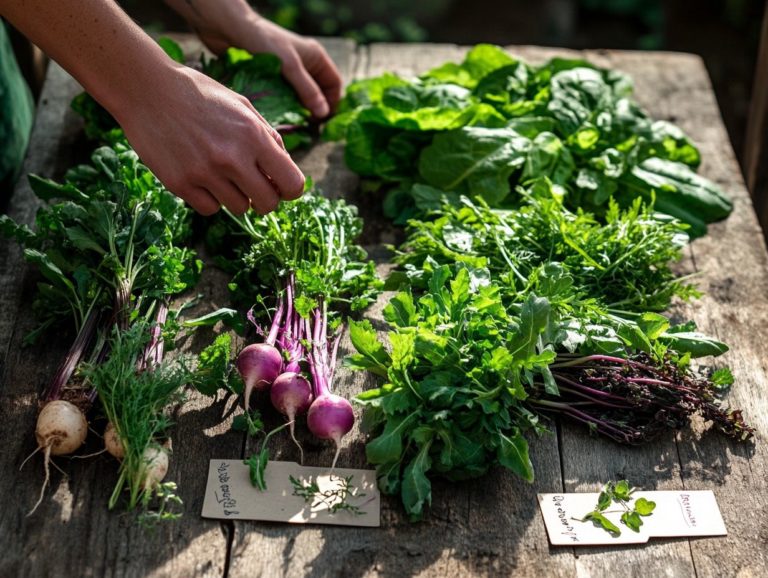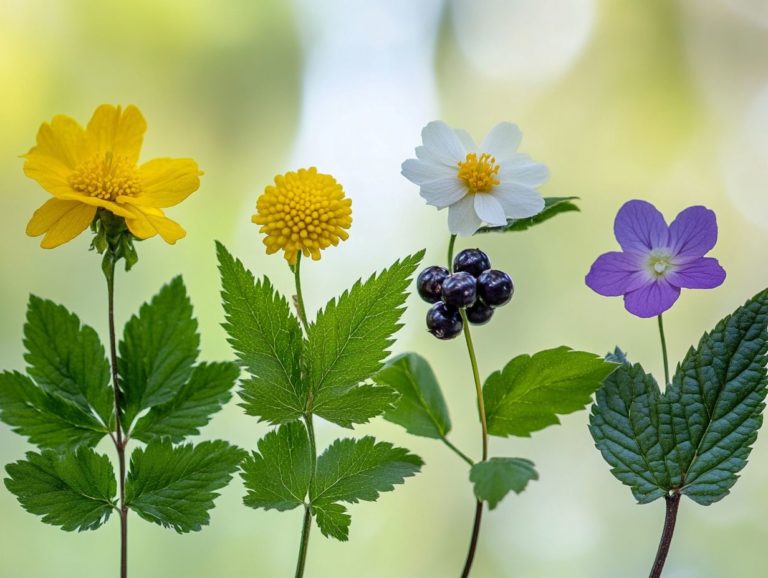5 Ways to Test Edible Plant Safety
Exploring the fascinating realm of edible plants can be an exhilarating and rewarding adventure. However, it s vital to tread carefully on this journey.
Here are five essential steps to guarantee that the plants you select are safe for consumption:
- Accurately identify the right species.
- Consult knowledgeable experts.
- Conduct patch tests (a small sample on your skin to check for allergies).
- Monitor for any adverse reactions.
- Take every precaution necessary.
You’ll also find answers to common questions about plant safety and the risks associated with plant poisoning. Embrace this journey with confidence as you learn to forage wisely!
Contents
- Key Takeaways:
- 1. Identify the Plant
- 2. Consult with Experts
- 3. Conduct a Patch Test
- 4. Start with Small Amounts
- 5. Observe for Any Adverse Reactions
- What Are the Most Common Edible Plants?
- Frequently Asked Questions
- What are the five ways to test edible plant safety?
- Why is it important to test edible plant safety?
- How can physical appearance help determine the safety of an edible plant?
- What role does smell play in testing edible plant safety?
- Can tasting an edible plant be a reliable way to test its safety?
- How do chemical and allergen testing ensure the safety of an edible plant?
Key Takeaways:
- Identify the plant and consult with experts before consuming any wild edible plants to ensure safety.
- Conduct a patch test and start with small amounts to observe any adverse reactions to the plant.
- Be aware of the signs and symptoms of plant poisoning and take precautions when trying new edible plants.

1. Identify the Plant
Identifying the plant is your crucial first step in foraging for edible wild plants. You need to carefully look at the plant’s features to distinguish between safe and poisonous options. Your knowledge of plants and understanding of common edible species will significantly enhance your survival skills in the wild.
Careful identification is essential; it can prevent gastrointestinal issues from consuming harmful plants and safeguard your health as you embrace a wild food lifestyle.
Begin by examining leaf shape, stem texture, and flower structure these features provide valuable clues. For instance, you can spot common nettle by its serrated leaves and stinging hairs, while chickweed boasts delicate, star-shaped flowers and smooth, oval leaves. Learning to recognize these traits will help you identify safe foraging options.
Familiarize yourself with signs of poisonous plants, such as vibrant colors or unusual odors, as these may indicate danger. It’s essential to study various parts of the plant thoroughly not just the leaves, but also the roots and fruits, since some might be edible while others are toxic.
Utilizing reliable field guides can significantly enhance your identification skills, boosting your confidence as you expand your foraging knowledge.
2. Consult with Experts
Don t miss out on the chance to learn from experts! Their insights can elevate your foraging game. Consulting with them is crucial for anyone eager to delve into the world of foraging for wild edible plants.
Experts can guide you through the complexities of plant identification and help you navigate the risks associated with poisonous varieties.
You can use resources like the U.S. Army’s survival manuals and the Outside+ app to connect with professionals who provide invaluable insights into safe foraging principles and effective safety assessments.
Engaging with seasoned foragers will open up a treasure trove of understanding regarding the nutritional properties of various plants, enabling you to make informed dietary choices. By tapping into community forums, you can share your experiences and pose questions, further enriching your knowledge base.
A plethora of books on foraging offers in-depth information and vivid illustrations, allowing you to study at your own pace. Collectively, these resources create a supportive learning environment that promotes safe, sustainable gathering practices while celebrating the rich diversity of nature s offerings.
3. Conduct a Patch Test
Conducting a patch test is an essential safety measure when exploring new edible plants. It helps you identify any potential allergic reactions or contact poisoning before you take that first bite. For a deeper understanding of this process, refer to resources on how to spot edible plants in the wild. This precaution means applying a small piece of the plant to your skin. Observe any reactions to help avoid serious symptoms and ensure a safer wild food experience.
To perform a patch test effectively, start by selecting a small area of skin ideally on your inner forearm and cleanse it thoroughly. Next, apply the plant material directly to that area, ensuring it stays in contact with your skin. Wait at least 24 hours because many reactions can take this long to develop, highlighting the importance of patience.
During this waiting period, look for signs of redness, swelling, itching, or blistering. Any of these symptoms could signal an adverse reaction, so it s crucial to listen to your body. This cautious approach not only safeguards your attempts to try new plants but also helps you understand which plants are safe for consumption.
4. Start with Small Amounts
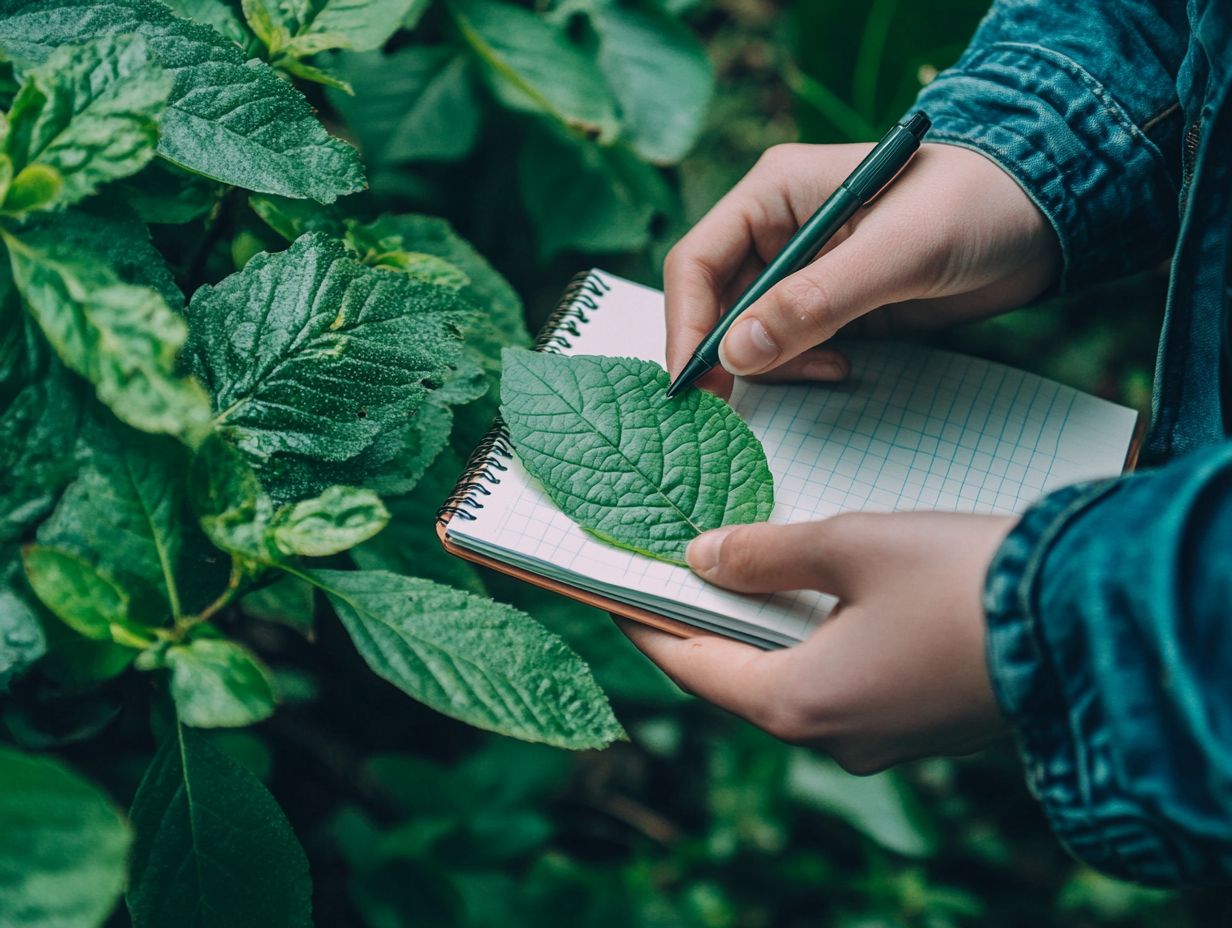
Starting with small amounts of wild edible plants is a wise strategy to reduce the risks of adverse reactions. This approach allows your body to gradually adjust to new foods while minimizing chances of stomach problems or signs of poisoning. It s a smart way to enjoy foraging safely!
Many seasoned foragers suggest trying familiar plants like dandelion greens or clover, which are not only nutritious but also have a low risk of negative reactions. Stories from enthusiasts highlight the importance of easing into unfamiliar edibles, as some faced mild discomfort after diving in too quickly.
Prepare these plants properly to eliminate harmful substances and improve digestibility. By respecting nature and taking measured steps, you can confidently explore foraged foods, broadening your palate while ensuring your safety.
5. Observe for Any Adverse Reactions
Observing for any adverse reactions after consuming wild edible plants is essential for safeguarding your health. This vigilance helps you catch potential issues early, such as symptoms from poisonous plants. To enhance your knowledge, learning how to distinguish edible from poisonous plants is all part of a thorough safety assessment that lets you make informed choices in your wild food journey.
Be attuned to your body s signals; symptoms such as nausea, dizziness, or skin irritations can be red flags. Keeping a journal of what you consume alongside a timeline of any symptoms can be an invaluable tool for spotting trends.
If symptoms persist beyond a couple of hours or worsen after consumption, seeking medical attention is crucial. Establishing this practice not only promotes better health but also enriches your overall experience of foraging and preparing wild foods.
What Are the Most Common Edible Plants?
Understanding the most common edible plants is vital for anyone interested in foraging. These species play a key role in the wild food lifestyle and offer nutritional benefits that can enhance your health.
Take common nettle, chickweed, and field sorrel; these can easily be added to your meals, providing a delightful taste experience when prepared correctly.
These plants are packed with essential vitamins, minerals, and antioxidants that support various bodily functions. For example, common nettle is rich in vitamin C and iron, making it a fantastic addition to soups or teas. Chickweed can be tossed into salads or saut ed, while field sorrel adds a zesty kick to pestos or sauces.
It s crucial for you to accurately identify these plants in their natural habitats to ensure your safety, as some look-alikes can be toxic. By emphasizing each plant’s unique characteristics, you not only elevate your dining experience but also unlock the health benefits that nature’s garden has to offer.
How Can One Identify If a Plant Is Safe to Eat?
Identifying whether a plant is safe to eat requires a careful plan that encompasses a thorough examination of its characteristics. This includes recognizing poisoning signs and leveraging resources for testing plant edibility, such as how to identify safe wild edibles and consultations with experts.
By cultivating a deep understanding of plants, you can confidently sidestep dangerous varieties and fully appreciate the benefits of a wild food lifestyle. You should keenly observe visual cues, such as leaf shape, flower color, and overall plant structure, which can provide essential clues about a plant’s safety.
Plant features, like how leaves are arranged and the type of stem, serve as additional aids in differentiating safe varieties from their toxic counterparts. Regularly consulting reputable plant identification guides and engaging with local foraging communities can foster continuous learning, ensuring you remain informed about the latest discoveries and insights.
By staying curious and exploring diverse reference materials, you can embark on your foraging adventures with both confidence and a sense of responsibility.
What Are the Different Types of Plant Poisoning?
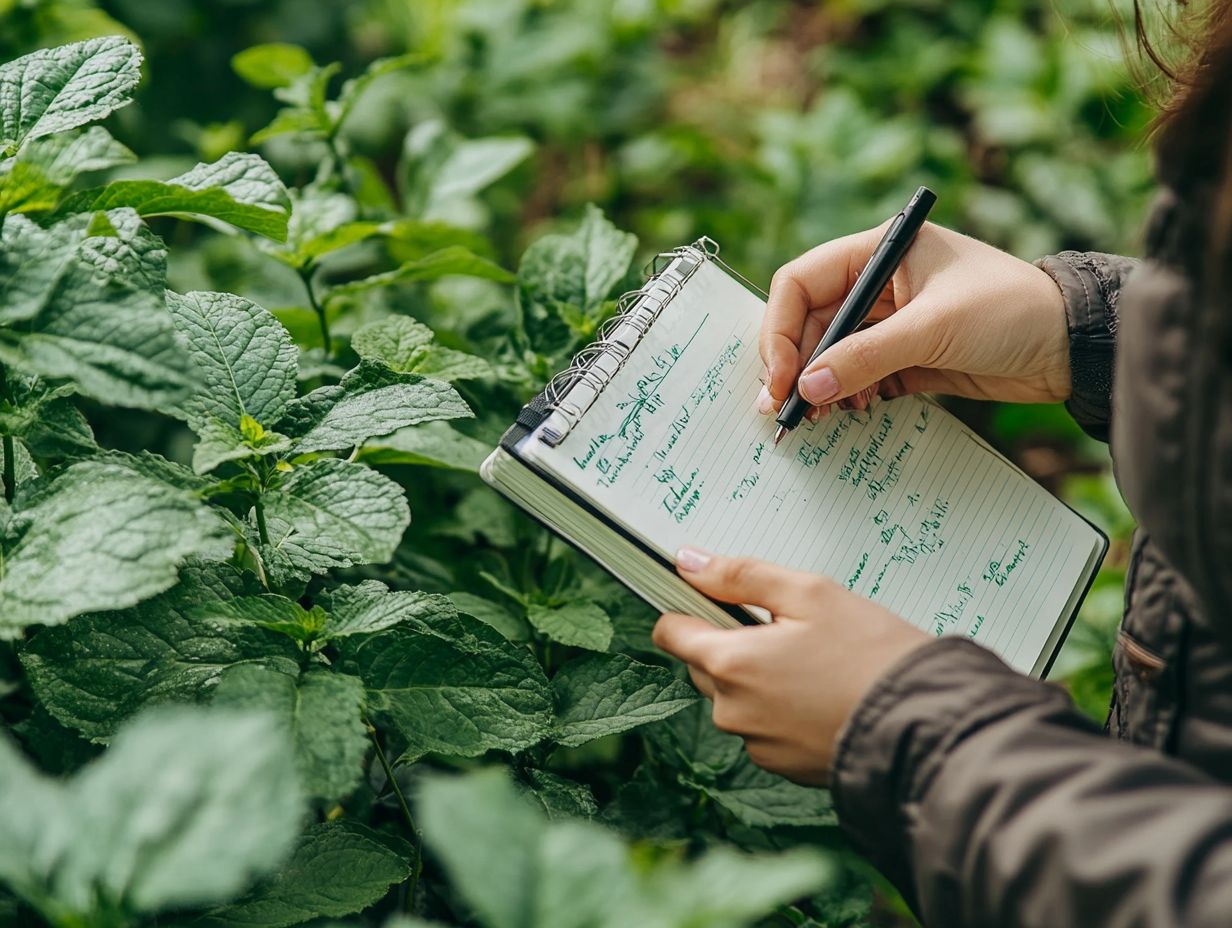
Different types of plant poisoning can occur when consuming toxic species, manifesting as anything from contact poisoning to stomach issues. Recognizing the signs of poisoning is essential for any forager.
By understanding the various categories of poisonous plants, such as hemlock and Datura stramonium, you can take proactive steps to prevent accidents and enhance your foraging experience. Ingesting hemlock can lead to respiratory failure, while Datura can induce debilitating hallucinations and escalate your heart rate.
Other notorious plants, like poison ivy and oleander, may cause skin irritations or severe internal reactions. To master the intricacies of safe foraging, take time to learn about these harmful plants they can be fascinating!
Consider attending workshops or consulting field guides that highlight their distinctive features and symptoms. Empowering yourself with this knowledge not only elevates your foraging experience but also deepens your appreciation for the wonders of the natural world.
How Can One Test the Safety of Wild Edible Plants?
Testing the safety of wild edible plants involves a series of recommended practices that you should follow, from conducting a contact poisoning test to observing your reactions after consumption. For a comprehensive understanding, refer to guidelines on how to forage edible plants safely. This thorough approach combines traditional foraging wisdom with modern techniques, enabling you with the skills needed to confidently navigate the world of wild food.
Among the various methods you can utilize, the patch test stands out as particularly essential. By applying a small amount of the plant’s juice to your skin, you can check for any adverse reactions, which is vital for assessing potential allergies. Skin reaction tests help determine your body s sensitivity to certain compounds found in these plants.
After your initial consumption, patient observation becomes critical. You should meticulously monitor any changes, such as gastrointestinal discomfort or skin irritations. If you notice any issues, get medical help right away to avoid serious problems!
Always remember to keep a record of any symptoms you experience; this information will be invaluable for healthcare professionals in providing the appropriate treatment.
What Are the Precautions to Take When Trying New Edible Plants?
Excited to explore new edible plants? It’s essential to take some precautions to protect your safety and well-being. Start with small portions and remain vigilant for any signs of poisoning. By combining these practices with careful harvesting techniques, you can enhance your foraging experience and promote a sustainable wild food lifestyle.
Stay away from areas with pollutants, like roadsides and industrial zones. These environments can lead to contaminated plants. Carefully examine each plant to ensure it matches descriptions from reliable sources. Participating in workshops or studying field guides can significantly sharpen your ability to distinguish between beneficial and harmful species.
Maintaining a foraging journal is a smart move. It helps you track which plants you’ve safely consumed and note any potential reactions. Keeping a foraging journal helps you forage safely and responsibly.
What Are the Signs and Symptoms of Plant Poisoning?
Recognizing the signs and symptoms of plant poisoning is crucial for anyone engaging in foraging. Early detection can be lifesaving, allowing for prompt medical assistance if needed. Symptoms can range from gastrointestinal distress to severe reactions. This shows why knowing harmful plants is so important.
Different plants have unique signs that can vary in severity. Some might cause rashes or allergic reactions, while others could lead to more serious nervous system problems or respiratory failure. For example, ingesting the notorious poison ivy can result in intense itching and blistering. Consuming the berries of the deadliest nightshade may trigger hallucinations and potentially fatal complications.
Understanding these variations is essential. Knowing how to respond whether by seeking immediate medical assistance or utilizing home remedies can significantly impact outcomes during such emergencies. Therefore, arming yourself with knowledge about local flora and their potential hazards is paramount for ensuring your safety during outdoor adventures.
Frequently Asked Questions
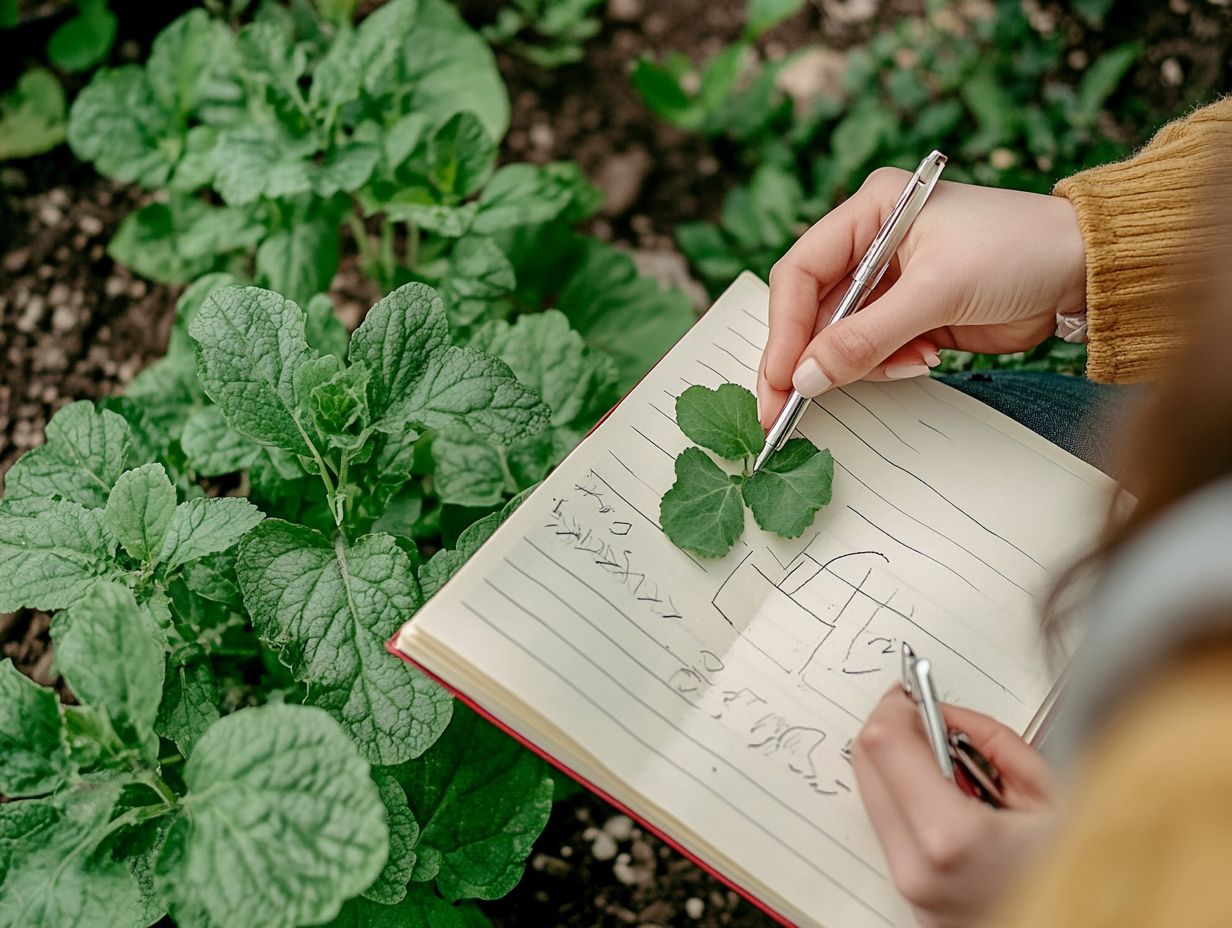
What are the five ways to test edible plant safety?
The five ways to test edible plant safety are physical appearance, smell, taste, chemical testing, and allergen testing.
Why is it important to test edible plant safety?
Testing edible plant safety is important to ensure that the plant is free from harmful substances.
How can physical appearance help determine the safety of an edible plant?
Physical appearance can help determine the safety of an edible plant by checking for signs of mold, discoloration, or other abnormalities that may indicate contamination.
What role does smell play in testing edible plant safety?
Smell can be an indicator of spoilage or contamination in an edible plant. If the plant emits a foul or unusual odor, it may not be safe to consume.
Can tasting an edible plant be a reliable way to test its safety?
Tasting an edible plant should only be done if you are certain it is safe to consume. To ensure your safety, refer to wild edibles safety tips, and perform chemical and allergen testing to avoid potential health risks.
How do chemical and allergen testing ensure the safety of an edible plant?
Chemical testing looks for harmful substances, while allergen testing checks if the plant could cause allergic reactions. Both are essential to ensure safety.

